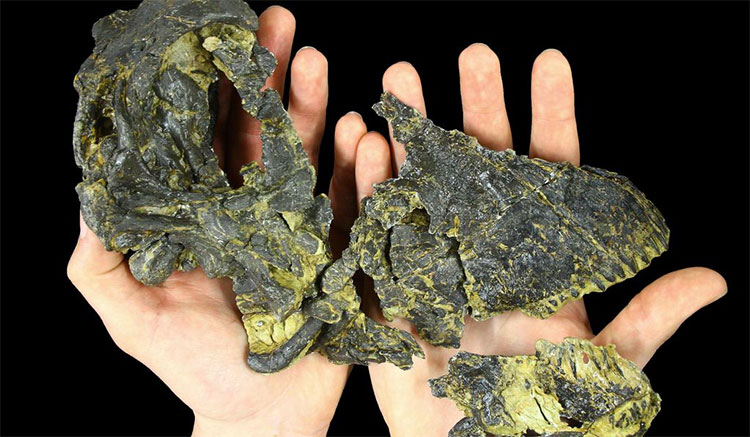Find the 'super small' skull of the giant herbivorous dinosaur
Known as the largest species on the ground, however, scientists have recently discovered a skull of a much smaller herbivorous dinosaur that stunned the scientific community.
A Dreadnoughtus-eating dinosaur can weigh up to 65 tons. The more common herbivorous dinosaur, Diplodocus, can weigh more than 20 tons. But with the new information posted in Scientific Reports published by a group of new international houses, it seems to need to add information about this species before.

The skull of a Diplodocus herbivorous dinosaur found in Montana (USA) is small in size, surprising scientists.
Based on the skull found in Montana in 2010 studied so far, it is thought to be the skull of a young Diplodocus, a species that once lived on Earth more than 150 million years ago in the late Jurassic period.
This skull is very special because it is only 24 cm long, making many scientists surprised by the huge dinosaurs that can reach 30 meters long.
Cary Woodruff, a graduate student at the Royal Ontario Museum put a big question on this finding: 'How can a child Diplodocus dinosaur hatch from an egg no bigger than a melon? And how can it be as long as 30 meters in just 30 years is a confusing issue '.
Another difference that is noted is that the number of teeth in this skull is the number of teeth of an adult herbivore dinosaur of 10 or 11, the skull of this dinosaur has 13 teeth.
This seemed to indicate that the Diplodocus diet changed as it grew, making it less teeth. Meanwhile, with young dinosaurs, more teeth allow it to eat more plants to nourish a growing body.
Prior to the new discoveries, the giant dinosaur skull of Diplodocus shared with National Geographic, Kristi Curry Rogers, a paleontologist at Macalester College, Minnesota, to argue that it was necessary. take a closer look at the conclusions from this skull because it is incomplete. In fact, the skull lacks part of the cheek, palate and lower jaw. Thus, if it is confirmed 100%, this is a skull of a Diplodocus that seems to be a little reluctant.
- Dinosaur skull intact in Canada
- Herbivorous dinosaurs received ancestors
- Discovered a giant dinosaur skeleton that has a lifespan of 70 million years
- Finding tiny dinosaurs in Germany
- Found the dinosaur skull dating to 65 million years in the United States
- The largest dinosaur in the world history is as big as a spaceship
- Find dinosaur footprints at NASA's center
- Discovered a more herbivorous dinosaur
- Series of dinosaur footprints revealed after storm in England
- Half-toned femur revealed a prehistoric 'super monster'
- The dinosaur has a thick skull like armor
- Shocking discovery of dinosaurs drive and
 Discovered an ancient centipede fossil 99 million years old
Discovered an ancient centipede fossil 99 million years old Discovered bat-like dinosaurs in China
Discovered bat-like dinosaurs in China Discovered a 200-year-old bronze cannon of the coast
Discovered a 200-year-old bronze cannon of the coast Discover 305 million-year-old spider fossils
Discover 305 million-year-old spider fossils